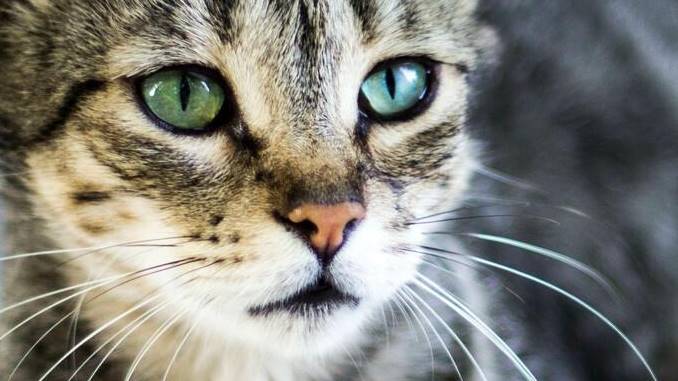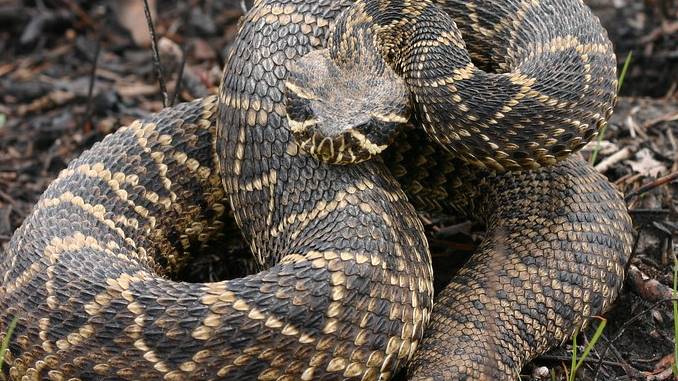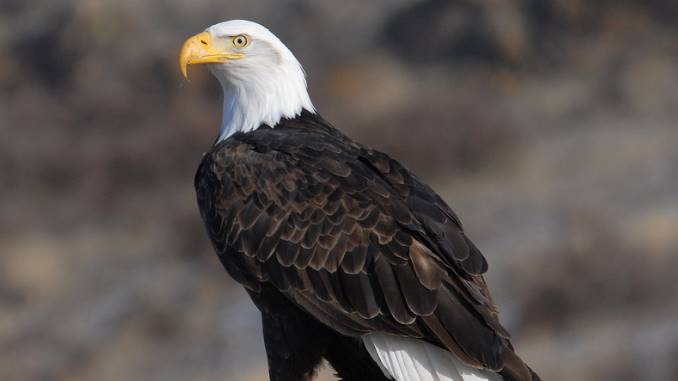Disclaimer: The information presented below is for general informational & educational purposes only. Always consult with animal professionals in case of specific concerns.
Cats like to walk around without recognizing potential threats around them. So how can you protect your pets? What eats cats?
There are more dangerous animals to your pets.
I will list the most prevalent right here and some methods to avoid them attacking the cats.
Let’s take a look.
What Eats Cats?
Cougars, coyotes, and wolves are large predatory creatures that hunt cats for food. Some animals, such as hawks, snakes, or owls, also attack cats.
Even if you don’t want to let your pets wander, it’s vital to be aware of the threats they may encounter. The following is a list of animals that are most likely to attack cats.

Snakes
Because snakes live in America, snake encounters are frequent. However, an adult cat isn’t a food source for most snake species.
If you see a snake eating your pet, it must be a python or a diamondback rattlesnake.
- Pythons
Although pythons are non-venomous, the Pythonidae family threatens your cats.
Cats are the prey of any snake big enough to eat small animals. Many big, nonvenomous snakes in the United States, like boa constrictors, start their lives as pets.
According to a study published in Biological Invasions, these pythons live mostly in Florida.
It’s not rare to come across this snake, and there are worries that the snake population may spread outside the Everglades.
- Diamondback Rattlesnakes

There are many reported cases where these lethal vipers eat a cat. On the other hand, Rattlesnakes don’t seem to be actively hunting cats.
Smaller cats, such as young and sub-adult ones, are prey for western and eastern diamondbacks.
A rattlesnake’s defense mechanism may be active if a curious kitten annoys it. If the snake is starving and the kitten is tiny enough, it will most likely pursue your pet.
These species belong to the Viperidae family. They’ll stay still and quiet until the prey gets too close.
Adult western and eastern diamondbacks can eat adult rabbits, which are roughly the same size as a tiny domestic cat.
Read more: What Eats Snakes In The Food Chain?
Dogs
Domestic and feral dogs sometimes prey on cats, especially when they become aggressive.
The way the two animals interact also depends on their upbringings and personalities.
Both of them may have completely opposing opinions about one other. They may, on the other hand, fight one another.
When a dog sees a cat, it may chase it. The reasons for this attack can be actual aggression, territorial impulses, or a desire to engage in fun.
Wolves
Due to habitat destruction and poaching, wolves were on the verge of extinction.
However, they are still an important part of the ecology for regulating prey populations.
Wolf-human encounters are becoming increasingly prevalent as a result of conservation efforts. This incident involves interactions between wolves and cats.
Wolves are aggressive hunters who will attack cats if the opportunity arises, which is most probable in the winter. During this time, other animals are rare.
Eagles
According to experts, eagles hunting cats is a rare event, although these animals with claws have enough skills and strength to do so.
The bald eagle is the second biggest bird of prey in North America. Other land animals even try to avoid these flying species.
During the day, eagles search and swoop down to get their food. Fish, small mammals, birds, and rodents are among the targets.

Cougar
Cougars, also called mountain lions and pumas, hunt elk, deer, coyotes, porcupines, and raccoons, among other animals.
These animals like to attack livestock herds. Hence, farmers used to hunt them. Homeowners also look for ways to avoid cougars.
The species are opportunistic, nocturnal predators. Thus hunting will take place between twilight and dawn.
Cougars don’t make good pets like your domestic cat. They will creep up on its target silently and rush at the perfect time to aim a lethal bite at the prey’s neck.
Owls
The great horned owls have the most varied diet of any raptor, and cats are among them.
Owls attack from the air. They usually spot the target and quietly swoop down when they are still flying.
An owl’s strong talons will grab onto its food and crush it with a powerful grip by the sharp talons. It may also bite on the neck of the prey.
When their food source becomes scarce, they will move to North America and start hunting there.
Coyotes
Coyotes belong to the Canidae group. You can find them living alone or in packs throughout the United States.
People found that these animals aggressively prey on cats, particularly during the pup-rearing period.
Coyotes hunt with their excellent eyesight and scent skills. To take down bigger animals, such as deer, coyotes would attack in pairs or groups.
These animals can hunt smaller prey, such as rats, birds, squirrels, or your pets, on their own. They catch everything that comes across them.

Hawks
The most abundant hawk in the United States is the red-tailed species.
This hawk eats small animals and isn’t able to tell the difference between wild and domestic cats.
Hawks hunt kittens, although this occurrence is not common. The reported documents seem to revolve around pets left unsupervised.
Hawks use their keen eyesight for hunting for food. A hawk will fly through the air, scanning the ground for its meals.
This bird may also seek out a nice position and wait for an appropriate animal to wander within its view range.
Wolverines
Even though a wolverine looks like a little bear, it belongs to the weasel family. A wolverine’s diet is mostly meat-based, yet it may eat on grass and berries.
Wolverines are dangerous and can attack animals far larger than themselves.
Many people even blame them for their missing cats. However, they only get involved in some cases.
Other Animals That Can Harm Cats
Many animals defend themselves fiercely even if they don’t intend to attack cats at first.
Other Cats
Feral, as well as other domestic cats, will conflict over territory regularly. These fights seldom end in fatalities.
However, if left unsolved, the wounds can become infected and lethal.
A cat, especially if not neutered, may be quite aggressive. When it comes to parenting their kittens, mother cats may be extremely violent with other cats.
Related: Do bobcats eat cats?
Rats
Cats have traditionally worked to reduce rodent populations. The farmers used to domesticate these animals mainly for this purpose.
Cats were highly successful at catching big rodents like rats. Unfortunately, they have become much smaller and weaker than their ancestors.
If a cat attacks a rat, the rat can fight back. The rat’s teeth may do damage, and a frightened rat will not hesitate to use them.
An artery can get hurt by a single bite at the incorrect place. Rats are also an illness and parasite vector, making their bites a lot worse.
Raccoons
Raccoons have realized that there is always a food source where people live. As a result, a cat’s chances of seeing a raccoon are fairly high.
A raccoon may easily overpower your pet during territorial claims or food battles.
Raccoons, as nocturnal creatures, may interact with cats when seeking food. The two creatures may fight depending on the availability or lack of food.
These animals with fur on their body may have a natural benefit of living experiences as a wild species. It has a weight and size advantage over your pet in most cases.
Scorpions
Only bark scorpions are dangerous to humans. Because a cat is much smaller than us, scorpion poison will have a more severe effect on it.
Aside from an allergic response, only the sting from a bark scorpion has the potential to be fatal.
Scorpions use their poison in two ways: hunting and defending themselves. They don’t consider cats their prey, so they only sting your pets when feeling threatened.

Spiders
There are more than 3000 different spider species. Only the brown recluse, black widow, and hobo spider are dangerous because of their poison.
Spider bites do not always lead to death. On the other hand, the venom might cause open and internal wounds.
Such wounds are vulnerable to infection. As the body resists a potent toxin, various symptoms may appear due to spider venom.
Cats are likely to come into contact with these six-legged animals as a result of their interest in exploring the spiders or their web.
Foxes
The fact that foxes are adapting to urban areas increases the cat-fox encounters. Fortunately, they rarely end up with fatal injuries.
Because foxes are as big as adult cats, they do not vigorously hunt them. Kittens, on the other hand, are a different story.
We can’t eliminate the possibility of a hungry fox attacking an older cat. If a cat gets too close to its babies, a fox may defend them fiercely.
Foxes are scavengers as well. They will eat the carcass of a dead cat if it comes across one. They may also pull the carcass to a more secure eating area.
Read more: What Eats Foxes In The Wild?

Porcupines
Porcupines are big rodents with a lot of spines. They have some natural predators. A curious or violent cat may encounter a porcupine.
Porcupines are tree-dwelling and ground animals. They only become aggressive toward something they consider a threat.
A porcupine will attack by swinging its tail around and hitting it with quills. These quills have barbs on the tips, piercing skin and remaining within.
Do Cats Have Natural Predators?
Yes, they do. Many creatures prey on your pets. They can injure, if not kill, the cats using their claws.
Not all the creatures attack your pets for food. Some defend themselves, and these defense systems and reactions can cause severe pain or even death.
Cats are also predators and prey by nature. Feral ones living close to or next to natural regions are likely to hunt many of their natural neighbors. Meanwhile, the domestic ones are very proficient predators.
How To Protect Cats From Predators?
Build a fence
Fences can keep the wild animals out of your yard. Building one is a good idea if you have the freedom to do so.
Try to install a six-foot fence with a roller bar or a 16-inch wire extension on top. It should include a wire apron that extends into the ground to keep predators from digging beneath and into your property.
You can also make your yard less appealing to predators by:
- Installing motion-sensitive lights;
- Trimming landscape to remove any hiding places;
- Removing bird feeders;
- Picking up dropped leaves and nuts;
- Harvesting gardens regularly;
- Use motion-activated lights;
- Putting your garbage containers in the garage;
- Remove any hiding areas in the landscape.
These efforts can help avoid invading wild animals, especially if you eliminate water sources and cave-like areas.
Change your behaviors
If you live in a neighborhood where coyotes are prevalent, you may help protect your pet by following these tips:
- Keep water and food bowls indoors.
- Always keep an eye on your cats when they’re out in the yard, particularly at sunrise and twilight.
- A bell on your pet’s collar is not advisable since it may attract unwelcome attention.
- Never give food to wild animals.
Learn how to handle the encounter
If a coyote enters your yard, you can look straight at it, wave your hands and yell. Once it gets closer, throw rocks or dirt to scare it away.
Frequently Asked Questions
The following questions and answers will give you more information about this topic. Let’s check!
Will raccoons eat cats?
Raccoons don’t see cats as food. They may, however, injure or assault kittens since they are opportunistic predators.
Can a hawk carry off a cat?
Although hawks are big enough to threaten a pet, they are unlikely, if not impossible, to lift a cat into the sky.
Why do dogs hate cats?
Because both of them are predators and live in the same habitat, they may fight for food and water.
If you raise both, check this video and learn how to make them live peacefully together :
Conclusion
What eats cats? Wolves, cougars, and coyotes are dangerous animals to cats. Some other animals also attack cats, such as snakes, owls, hawks, and more.
The number of their predators may make you overwhelmed, but not all of them injure your pets. If you want to allow your pets outside, watch them carefully and establish a pattern for them to come home at night and dawn.

Hi, my name is John, and I’m an animal lover. I’ve been fascinated with the animal kingdom since I was 5 years old, and my passion keeps growing bigger as I age. And this blog is where I share my researches and passion with animal lovers all around the world.
